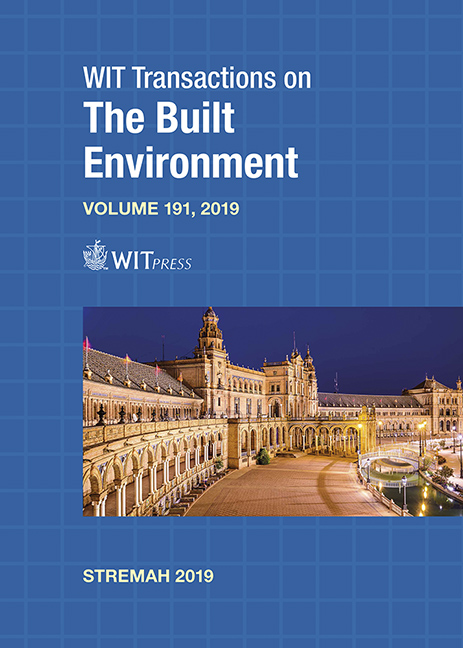STRUCTURAL PERFORMANCE OF CONCRETE ELEMENTS RETROFITTED BY A GEOPOLYMER STRENGTHENING SYSTEM: INPUT IN THE REHABILITATION OF HISTORICAL BUILDINGS
Price
Free (open access)
Transaction
Volume
191
Pages
12
Page Range
369 - 380
Published
2019
Paper DOI
10.2495/STR190321
Copyright
WIT Press
Author(s)
ERNESTO J. GUADES, HENRIK STANG
Abstract
Rehabilitation of historic buildings is a priority since their structural elements suffered from various levels of damage that took place during their service life. Recently, geopolymer is gaining acceptance as an emerging material in the construction industry due to its added advantages. It has shown excellent bond strength to concrete substrate, lower creep and shrinkage, greater durability in severe environments and higher temperature and fire resistance. Geopolymer is relatively new in the rehabilitation system of building structures, although it had been used for new construction applications. Therefore, an effort was made to gather information on the use of geopolymer as repair and strengthening material. This paper reviewed the structural performance of geopolymer-strengthened concrete elements and the field applications of geopolymer as strengthening material for historical buildings. Information from the literature revealed that the load capacity of the non-damaged and fully damaged reinforced concrete (RC) beam can be increased by 12% and 100%, respectively, when strengthened using plain geopolymer. It was found that short fiber-reinforced geopolymer (SFRG) strengthening system enhanced the peak load of RC beam by 15% while 370% if using continuous fiber-reinforced geopolymer (CFRG). To date, field applications of geopolymer strengthening system on historical buildings were limited, nevertheless this technique provided good structural performance making it suitable in the rehabilitation process.
Keywords
geopolymer, historical buildings, repair and strengthening, fiber-reinforced geopolymer




